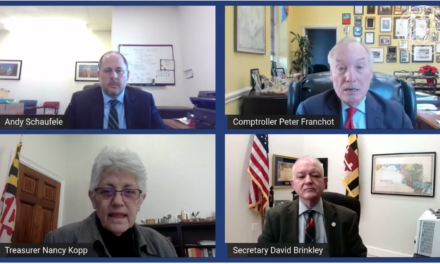By Nick DiMarco
Nick@MarylandReporter.com
The state has been too slow in spending federal stimulus dollars put aside for weatherization, potentially hindering plans to make thousands of homes more energy efficient, according to a liberal-leaning state watchdog group.
But officials say they’ve been slowed by the strict guidelines of the American Recovery and Reinvestment Act. They believe the state is still on course to meet its goal of weatherizing 6,800 homes within three years.
The report, by Recovery Watch Maryland, says the state should release the stimulus money more quickly, and complains that one nonprofit is getting too much of the business.
Everybody agrees there were several obstacles, as Maryland distributes $61 million for local jurisdictions to pay weatherization contractors over the course of three years.
The state had to first create worker training programs and certify any contractors who wanted to do the work. Maryland also had to make sure the work paid the prevailing wage for people with similar jobs, as required under the stimulus package.
The process of weatherizing a home includes caulking, weather stripping, replacing broken window glass and installing insulation.
County project planners said it was difficult to ask contractors to bid on the work, without knowing what the prevailing wage rate would be. All of these factors created an initial lag in the program’s startup last summer.
There was also a shortage of companies who had the high-tech equipment required to carry out the tasks, said report author Joel Yesley, a researcher for the Maryland Budget and Tax Institute — one of the organizations that comprise Recovery Watch Maryland.
“As I pointed out in my report, they need [the money] up front in order to get off the ground in order to get these startup companies moving. That’s a serious problem of insufficient finance,” he said. “The state has within its power the ability to immediately lessen this problem by distributing the funds more freely, but they’re taking a very conservative approach.”
William Ariano, deputy director of the Community Development Administration in the Department of Housing and Community Development, said the state was slowed down by all of the stimulus rules.
Annual grants from the Department of Energy were used to begin weatherizing homes last summer, before ARRA funding kicked in. In recent months, more homes are being treated using ARRA dollars.
The Department of Energy provided $5,280,00 in annual grants in 2010 and about $2 million for 2011. That money is on top of the stimulus cash.
The average went from 80 homes per month to 300 over the past year, according to Ariano.
“This was not meant to be a two-month program or a six-month program,” Ariano said. “It was meant to weatherize 6,800 units over three years and if you look at it in that light we’re doing a pretty good job.”
Yesley notes in the first paragraph of his report that the nonprofit group Maryland Energy Conservation received “considerably more work” than any other group in the state.
Ariano defended the allocation, calling MEC “the last man standing” in a state where counties were cutting funding to these types of programs. MEC currently services 10 counties, by request.
A “vicious cycle” has begun churning as new contractors want to take part in the program, but cannot because of issues such as equipment funding or the time it takes to train workers.
“I can’t justify taking contracts away from somebody to give to someone else just so we can wait six to nine months until they can get production started,” Ariano said.






Recent Comments